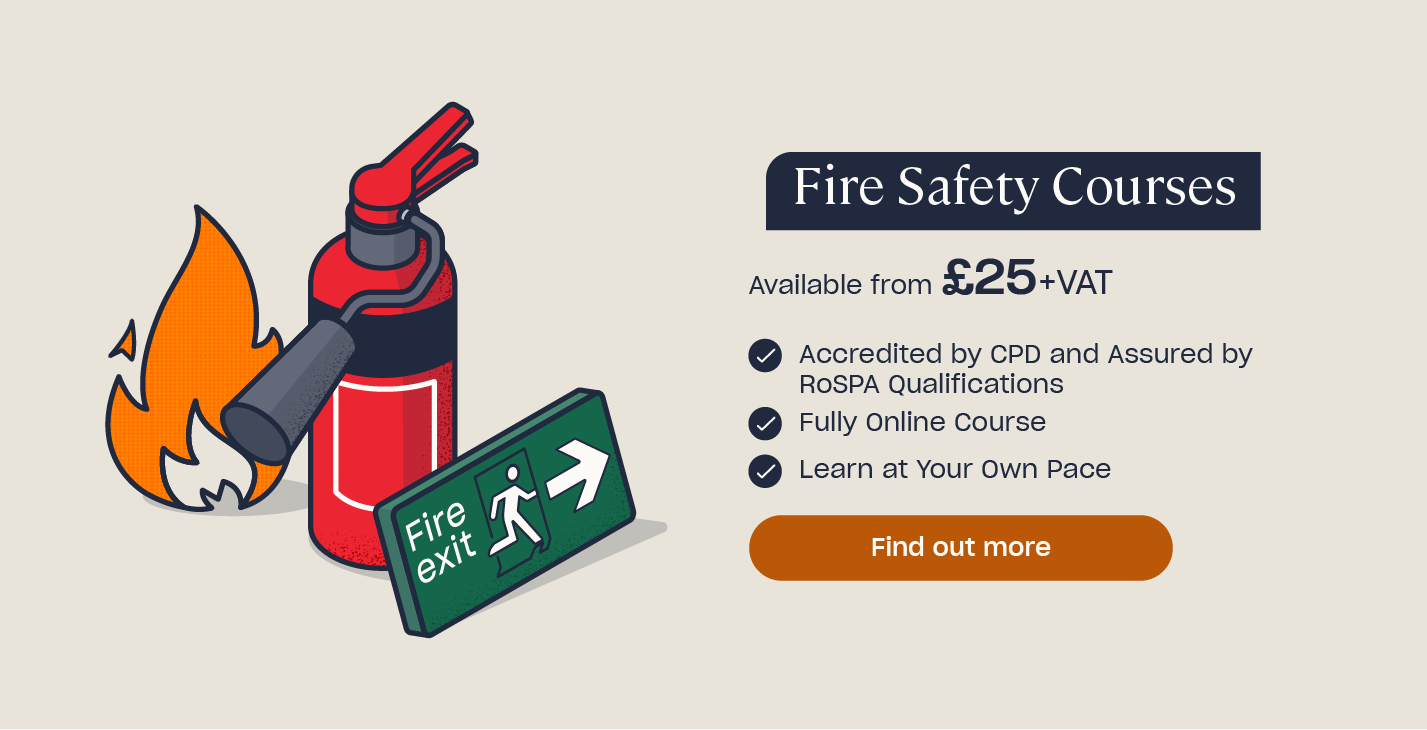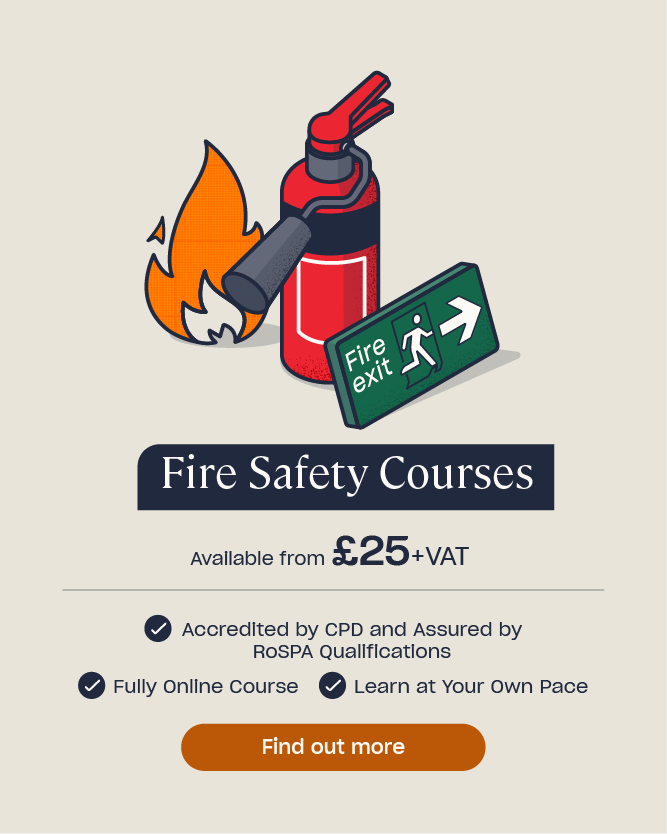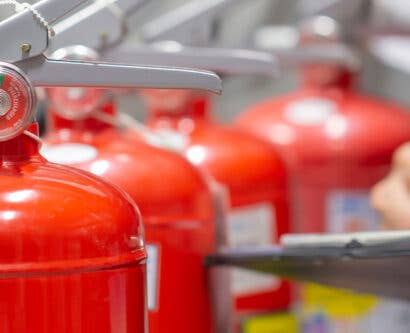Personal Emergency Evacuation Plan: Free Template
In the event of an emergency, such as a fire, everyone within a building must be able to evacuate safely. For some people, escaping the building quickly can be a challenge due to a physical or mental impairment, and this is a particularly important consideration in workplaces, care homes, blocks of flats and other places where there is an owner or manager in charge of other people’s safety. In this article, we’ll look at what a personal emergency evacuation plan is, why you might need to create one and how to create one. We’ll also provide you with a downloadable personal emergency evacuation plan template that you can use in your own place of work.
What is a Personal Emergency Evacuation Plan?
A personal emergency evacuation plan – known as a PEEP – is an escape plan written for a specific individual who may need additional support to evacuate a building during an emergency, such as a fire.
Under UK fire safety legislation, all owners and managers of buildings and workplaces have a legal responsibility to ensure all occupants can escape safely and quickly in the event of a fire.

For some people, evacuating a building quickly or understanding fire evacuation procedures can be difficult due to a physical or mental impairment, so they require extra assistance from others. These people require a bespoke PEEP written just for them, whether permanent or temporary.
A permanent PEEP is created for someone with a lifelong disability or impairment, such as difficulties with sight, hearing, mobility or dexterity, a mental health condition or a neurodiverse condition that makes awareness of risk or interpretation of instructions difficult.
A temporary PEEP is created for someone with a short-term disability or impairment, such as a broken leg, someone recovering from surgery or a person in the later stages of pregnancy. Temporary PEEPS should be reviewed and updated whenever the person’s condition changes.
Why Might a Personal Emergency Evacuation Plan Be Needed?
If a person cannot evacuate a building unaided during a fire emergency, then they require a PEEP. This usually refers to people who have:
- A sight impairment, so perhaps cannot read emergency signage and information, are unable to identify exit routes or struggle to see fire safety hazards.
- A hearing impairment, so may struggle to hear fire and smoke alarms or be unable to clearly hear evacuation instructions from the fire warden.
- A mobility impairment, so are unable to use stairs, may not be able to move very quickly, are unable to walk unaided or need specialist equipment to be moved.
- A dexterity impairment, which affects strength or coordination, so may have difficulty opening fire doors, operating fire alarms or opening windows.
- A neurodiverse condition, such as autism, which can mean a lack of awareness of what alarms mean, inability to follow escape instructions, difficulty interpreting what’s happening or affect ability to recognise hazards.
- A mental health condition, certain conditions may cause difficulty in recognising or interpreting evacuation instructions.
- An injury or medical condition, such as a broken leg or the later stages of pregnancy, may make it difficult to move quickly or use stairs.

In the UK, the Equality Act 2010 requires employers to make ‘reasonable adjustments’ for any members of staff who may have difficulty escaping during a fire or other emergency. This includes creating a tailored PEEP for those who require one and which addresses each particular person’s individual needs.
Furthermore, the Regulatory Reform (Fire Safety) Order 2005 requires employers to carry out a fire risk assessment to identify and manage fire hazards in the workplace and, as part of this, they must ensure all employees can evacuate safely in case of fire. The fire risk assessment must take into account people who need extra help to evacuate and, once identified, PEEPs must be created for these people.
Want to Learn More?
For owners, employers and managers of buildings and workplaces, a knowledge of fire hazards and fire safety procedures is essential, not only for legal compliance but also for the welfare of the people you are responsible for. Our range of online Fire Safety Courses, including Fire Warden, Fire Risk Assessment and Fire Safety For Care Homes will give you the knowledge you need to keep people safe.
How to Create a Personal Emergency Evacuation Plan
The person in charge of the premises, whether an owner or employer, has overall responsibility for ensuring personal emergency evacuation plans are created but they can also give the responsibility to a nominated person. This could be a manager, supervisor or facilities officer, for example, who is identified as the responsible person for creating and reviewing PEEPs.
To create a personal emergency evacuation plan, the responsible person needs to fill out a form containing a range of standard questions about the person’s health condition and/or disability, any concerns the person has about evacuating and the support the person will need in the event of a fire. You can download a free PEEP template below.

The exact information recorded in the PEEP will depend on the person it’s being created for, the risks present and the building/s involved. It’s important that all PEEPs are created with the individual in mind and the information on it is tailored to them; never use a ‘one-size-fits-all’ approach.
The main contents of a PEEP include:
- Details of the person’s health condition, impairment and/or disability.
- Whether it’s a permanent or temporary PEEP.
- How the person will reach a place of safety in an emergency.
- Whether the person understands the evacuation instructions.
- Any special equipment or procedures the person needs to help them escape.
- Whether the person is able to evacuate unaided or if they need assistance.
- Who the PEEP will be shared with.
- A signature from the person stating they agree to the contents of the PEEP.
Once a PEEP has been created, the safety arrangements within it must be physically checked to ensure they work as expected. Carry out a rehearsal of the evacuation, with the person the PEEP has been created for, to ensure that everything goes smoothly and there aren’t any unforeseen risks or problems. Once checked, the PEEP can then be marked as finalised.
The contents of the PEEP should also be reviewed regularly – at least annually and whenever the person’s condition changes, whether it gets better or worse. If changes to the PEEP are needed as a result of the review, then a new rehearsal of the plan should be done to ensure the changes are adequate and safe.
Personal Emergency Evacuation Plan (PEEP) Template
You can download a free personal emergency evacuation plan template at the link below – use this blank PEEP form as the basis for creating a bespoke PEEP, ensuring you fill out each section with information relevant and specific to the person it’s for.
A personal emergency evacuation plan (PEEP) is an essential legal requirement for employers and building owners, as everyone within the premises, no matter their health, impairment or disability, must be able to evacuate quickly and safely in the event of fire. Use our free downloadable PEEP template to help you get started.











